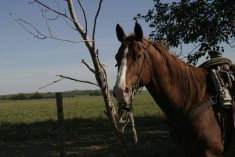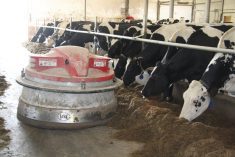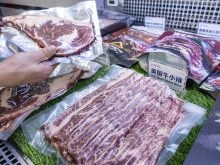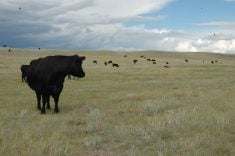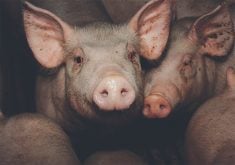A seven point proposal from Alberta to manage the beef industry out of the BSE crisis has been accepted by a newly formed livestock consortium.
Written by the Alberta Beef Industry Council, the proposal raised many questions from those attending the new group’s first conference in Red Deer Feb. 19-21.
The hottest points dealt with setting a minimum price for market-ready cattle, a cull slaughter and government loan guarantees. Critics of the proposal said it lacked detail and were adamant the plan must not evolve into a beef marketing board.
Read Also
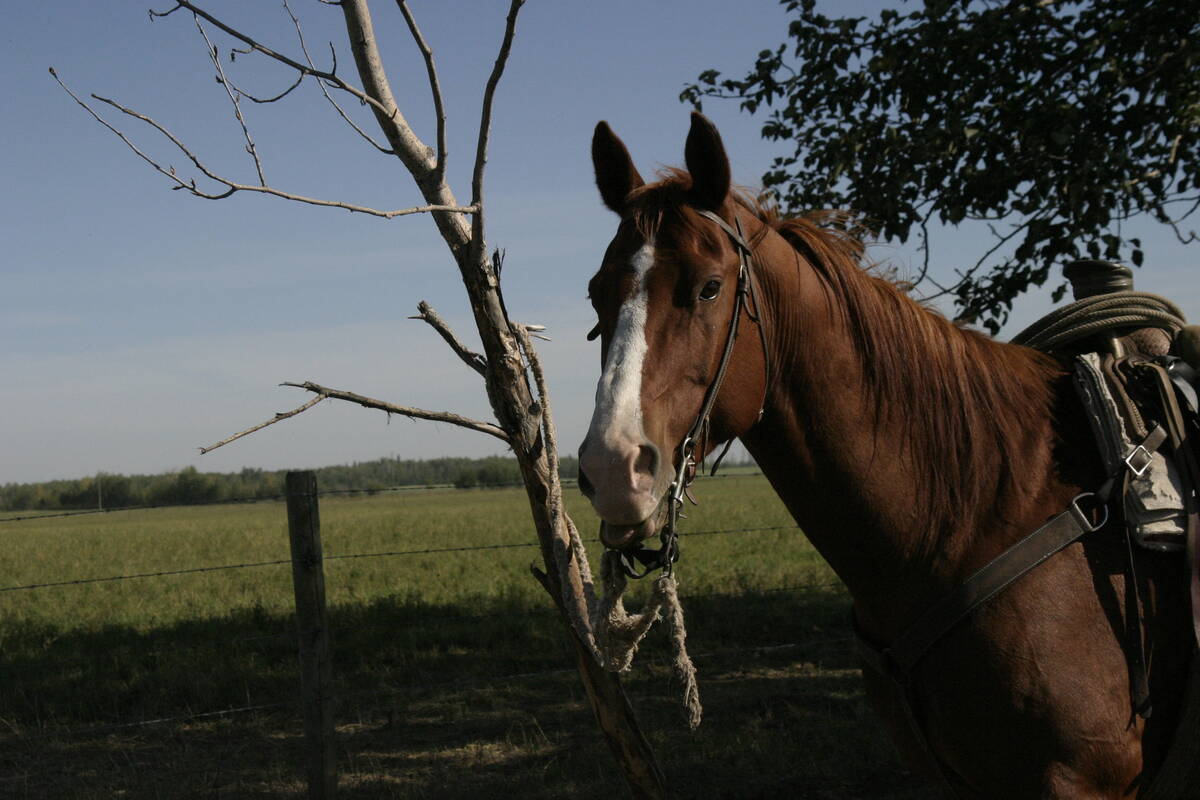
Horses challenged when asked to be weekend warriors
Horses are creatures of consistency. Their bodies and nervous systems are designed for steady, rhythmic movement, low-intensity grazing and regular social interaction.
Feeder and veterinarian Kee Jim of Okotoks, Alta., said the plan is a jumping-off point for action. Anticipating an early reopening of the American border must not be the only recovery plan.
“This crisis has been going on since May 20 and we have to identify the problems and come up with solutions or the industry will be gone,” he told the group.
Manitoba cattle producer Harry Dann said the plan needs federal and provincial support.
“There is too much emphasis on Alberta. We have to think of it as Canadian,” he said.
Others said a proposed pricing formula will only work for a percentage of the cattle available for slaughter each week, and could create wild distortions in supply and demand.
“When anyone enters a marketplace either at the beginning or the end, you distort market signals,” said Dave Plett of Western Feedlots at High River, Alta.
Rancher Karen Gordon of High River worries the beef industry could become integrated in the same way as the American poultry and pork businesses. But she agreed action among all the players is needed to save the industry.
“Industry council’s first job should be to sit at the table with the packer and the retailers,” she said.
Cochrane, Alta., rancher Harvey Buckley said legislation is available to implement a price plan, but as a past member of the Alberta Marketing Council, he advised caution and thorough study of how other commodities manage pricing issues.
“You need to explore this further,” he said.
Getting rid of thousands of cows concerned feeder Cor Van Raay of Picture Butte, Alta.
“I don’t care what kind of program you put in place, there are too many cows,” he said.
“We’ve got to have a place for immediate depopulation. You’re never going to get this oversupply problem solved without an immediate cull,” he said.
He also said the council must push for wider testing of slaughter cattle to give Canada an advantage in world markets.
Rancher Norm Ward of Granum, Alta., said the proposals must be addressed simultaneously. Included in that is a serious examination of the Canadian regulatory and tax system so these ideas can move forward quickly. Creative ideas are needed for the cull cow and bull dilemma, he said.
“Maybe we will have to look at a plant that is not federally inspected and the meat can go to a beneficial use, whether it be pet food or fertilizer,” Ward said.
Producer John Laughton said the Canadian public should not be asked to guarantee cattle producers’ loans.
“I agree something has to be done, but I believe we are asking for too much here,” he said.
“We’re being too greedy and we are just going to breed irrationality into the feeder market,” he said.
A draft was forwarded to Alberta agriculture minister Shirley McClellan, who advised the group to proceed with caution.
“Philosophically I have some problems with it. Fundamentally I understand why they are coming to this conclusion,” she told reporters Feb. 20.
“I caution them to make sure they examine this very closely. What they ask for is what they will have to live with,” she said.
Eric Butters of Cochrane, Alta., a member of the Alberta Beef Producers, said many of the ideas presented are good fodder for discussion as the industry flounders.
“You can taste the desperation in the room,” he said in an interview.
As the level of anxiety increases in rural communities, he said the level of awareness of the magnitude of this crisis is growing slowly.
Butters questioned some of the proposals, including minimum pricing. He wanted to know how cattle supplies might be managed. He is also not sure whether any level of government is motivated to provide high levels of aid when it is trying to sell farmers on the Canadian Agricultural Income Stabilization program for financial relief. He joins others who are dubious about its benefits for short-term help.
“Most of us don’t know how well CAISP is going to work,” he said.
The beef industry plan also calls for further lobbying efforts to reopen the borders to live cattle. While boxed beef has been exported to the U.S. since September, it is not the full answer.
“Boxed beef exports were good for us, but we’re still in a wreck,” Butters said.



